What Is a Constructivist Classroom?
This post may contain affiliate links.
There is plenty of research to prove, that constructivist education is the best way for learners to learn. Research (see my bibliography below) shows that constructivist learning is congruent with how the brain learns.
Constructivist education is when learners actively construct meaning by building on background knowledge, experience and reflecting on those experiences.
Said in another way, constructivist learning is when “learners are given the freedom to think, to question, to reflect, and to interact with ideas, objects, and others—in other words, to construct meaning.” –Brooks and Brooks.
It’s “the idea that development of understanding requires the learner to actively engage in meaning-making.” – Brader-Araje & Jones (2002)
I’ve made a little comparison chart to make it more clear.
| (1950s?) Old-School Classroom | Constructivist Classroom |
| Teacher directed (didactic dissemination of information) | Learner-centered. Teacher as facilitator – students construct knowledge through critical thinking, manipulatives, primary resources, and hands-on activities. |
| Student works independently. | Student works collaboratively in groups, independently or in partners. |
| Small parts first. Big idea at the end. | Big idea first. All parts support big idea. |
| Correct answers are the goal. | Thinking and support of thinking are the goals. |
| Assessments are tests; separate from learning task. | Assessments are observation, conferences, daily work, portfolios and included in learning tasks. |
| Worksheets, workbooks, basal readers. | Books, journals, real-world situations, workshop approach. |
| Teacher evaluator. | Self-reflection, student evaluator and teacher evaluator. |
| Product based learning: All students will learn on demand the same thing at the same time aka. One-size-fits-all approach. | Process based learning: Learners create meaning and context by exploring new ideas and experiences, generating hypotheses, problem solving. |
| Teacher talks to (at) students; students expected to listen and absorb knowledge. | Teacher-student dialogue through conferring, questioning, and wondering. |
| Teacher makes all the decisions. | Shared responsibility and decision making. |
| Students answer questions. Empowered teacher. | Students ask questions. Empowered learner. |
| Individual learners. | Community of learners. |
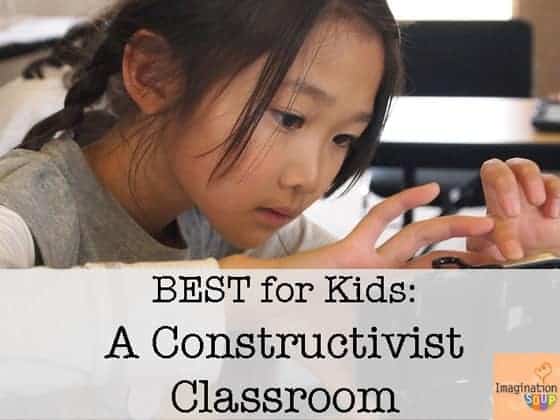
Let me give you a few examples.
Let’s say the learning goal is to learn how to recognize main idea from details.
An old-school classroom might provide the children with worksheets and multiple choice answers after a whole group lesson on the overhead with the teacher presenting the information.
A constructivist classroom would start with a mini-lesson where the teachers asks the kids about going to a birthday party at a familiar place such as Build-a-Bear. She might ask the class, what is the most important thing and what are some details? The teacher would write down the students’ responses on a large chart in two columns (big idea /details ) and as the learners respond encourage their thinking, ask for clarification, ask more questions, add some of her thinking. Then, the teacher would ask the learners to think about different scenarios such as big idea at dinner or big idea at shopping. Then, she’d show how to apply this to reading which they would tackle as a group. After that, the learners would get to apply and practice in their own self-selected books – using sticky notes to write down details or main idea, probably only one of the two until that concept is mastered, then switch. (Or work in collaborative groups with a shared text.)
Do you see the difference between the two classrooms?
Or, what if your learning goal is to introduce meaning in poetry?
An old-school (some call this traditional) classroom teacher would read the poem to the group or have the students round-robin read. (Gack – don’t EVER do this! Round Robin reading = no comprehension happening!) Then, she would ask for the learners what the poem means. THERE WILL BE A RIGHT ANSWER: the poem means that spring is renewal or something of the sort.
A constructivist teacher will read the poem and stop and share her own thinking outloud. “Reading this part about the hard dirt makes me think of trying to plant bulbs last year and I couldn’t dig very deep because the ground was frozen.” The teacher shows how reading poetry connects to her prior knowledge and makes her visualize. She then will ask them to read the poem and practice making connections to their own prior knowledge. Then, she’ll have them partner share – so everyone gets a turn to talk. If she asks what the poem means, and she may not, she’ll accept any answer that shows the student constructed meaning from the poem and his or her background knowledge.
Teachers, what do you see happening in your own classroom that you can share which illustrates how you help students construct knowledge?
Parents, what do you see (or not see) happening in your child’s classroom with regards to a constructivist approach to learning?
Resources:
Christie, A. (2005). Constructivism and its implications for educators. http://alicechristie.com/edtech/learning/constructivism/index.htm
Clarkson, B., & Brook, C. (n.d.). I can’t understand why I didn’t pass: Scaffolding student activities.
Grennon Brooks, J., & Brooks, M. G. (1999). In search of understanding: The case for constructivist classrooms. Alexandria, VA: Association for Supervision and Curriculum Development.
Honebein, Peter. C. (1996). Seven goals for the design of constructivist learning environments. In Wilson, Brent. G. (Ed.). (1996)
Thirteen Ed Online (2004). Constructivism as a paradigm for teaching and learning. http://www.thirteen.org/edonline/concept2class/constructivism/index.html
Zemelman, Daniels, & Hyde. (1998) Best Practice New Standards for Teaching and Learning in America’s Schools.
(also, anything by Vygotsky)
* ![]() Some rights reserved by flickingerbrad
Some rights reserved by flickingerbrad
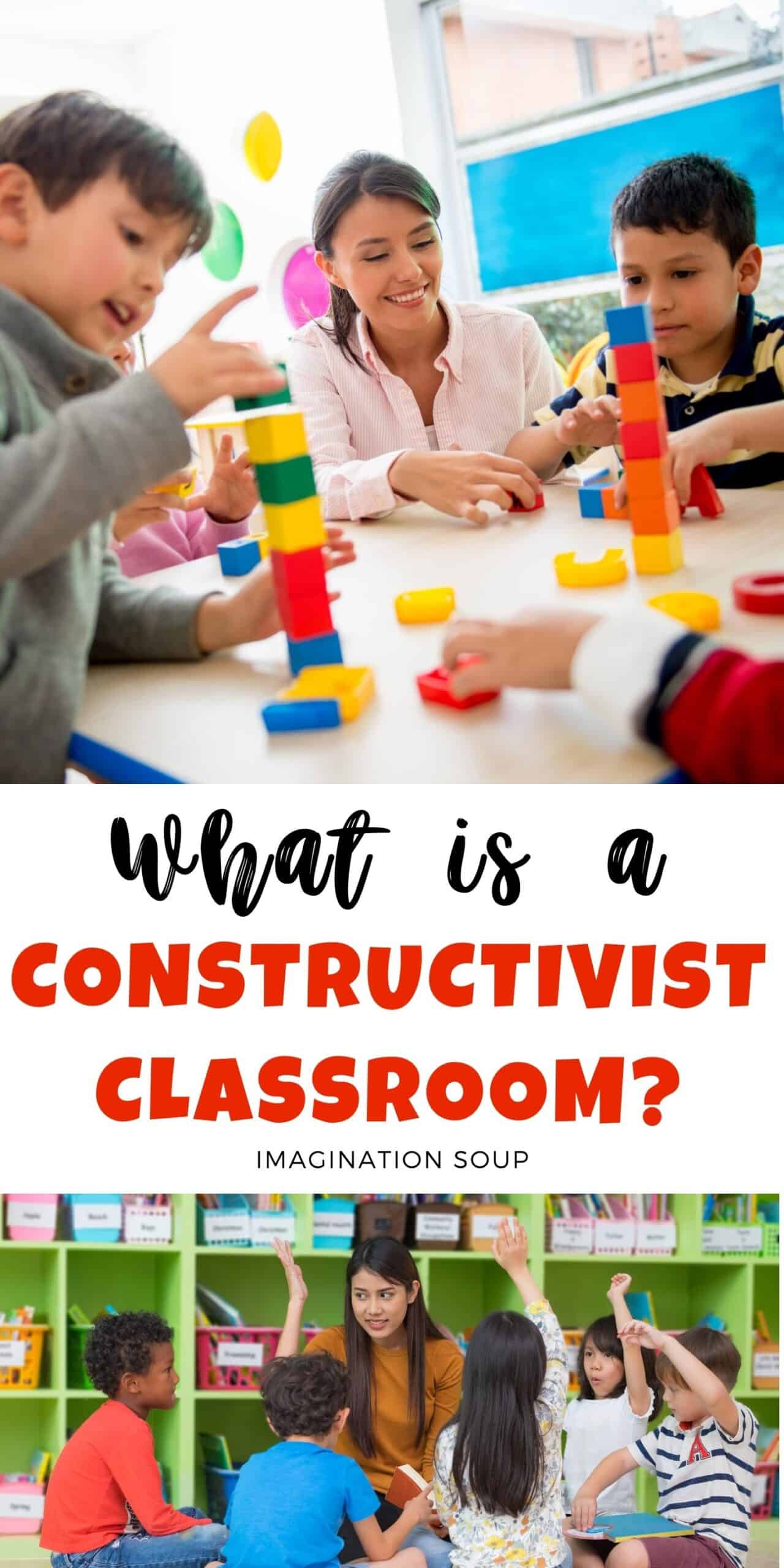
The walls in an exemplary (constructivist) second grade classroom
What Makes an Excellent Teacher?
Convergent vs. Divergent Thinking (What is the Difference?)



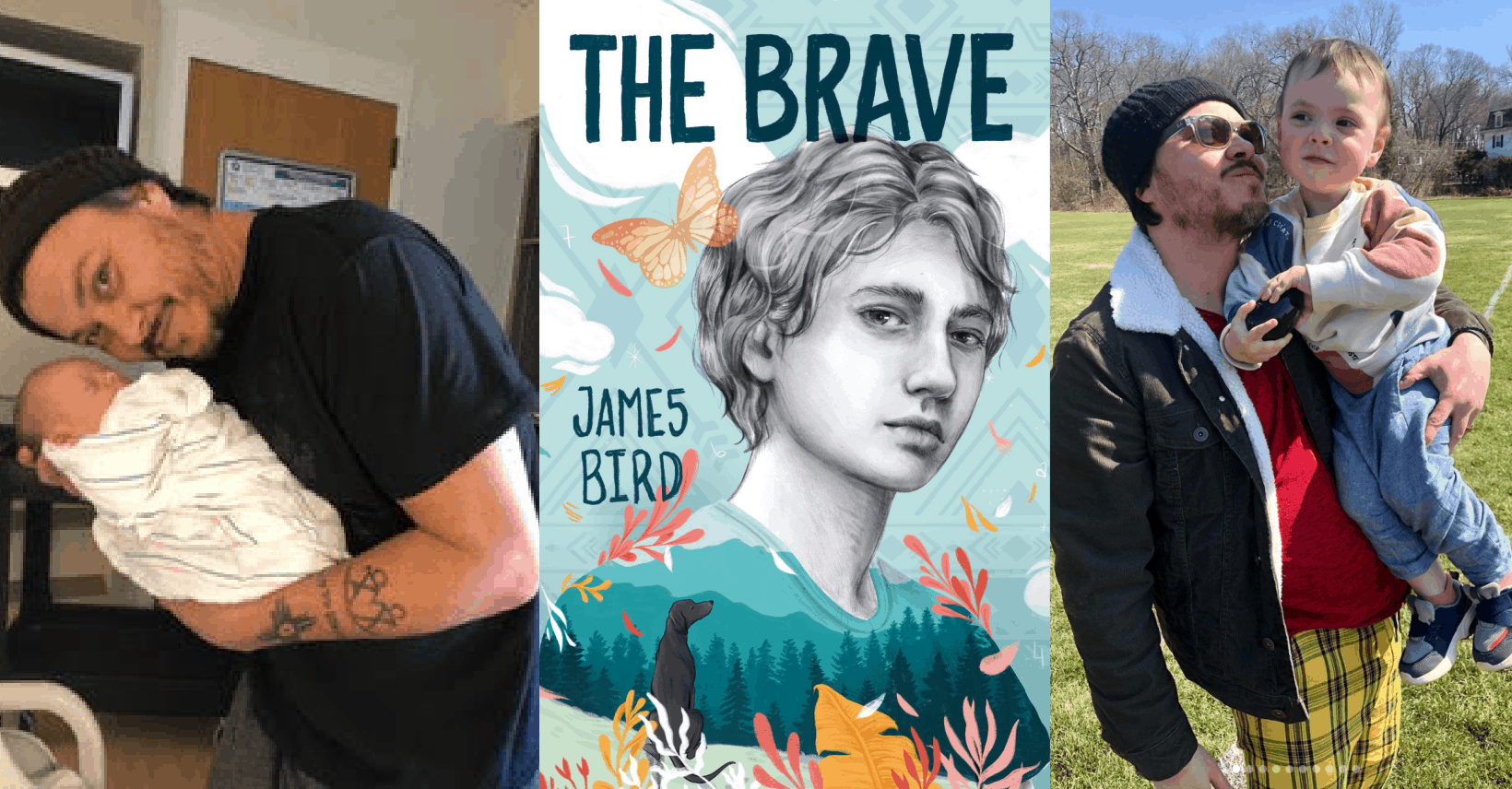
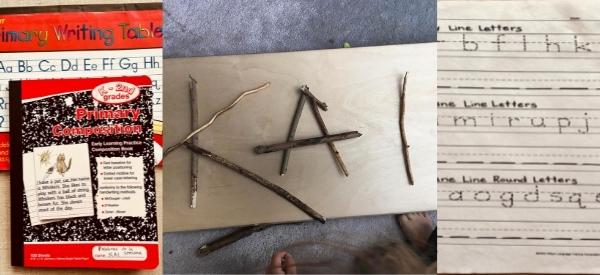
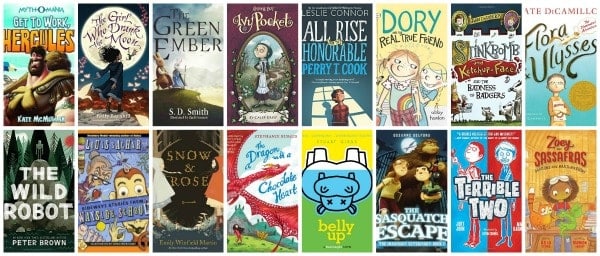
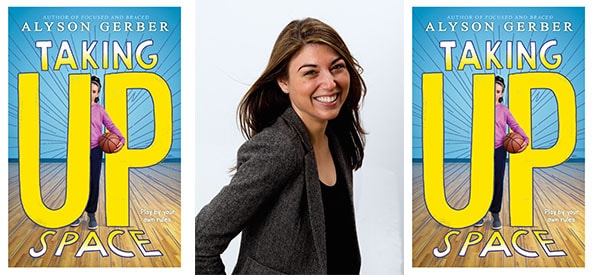
In almost every single piece of research, results conclude that teacher-centered classrooms using direct instruction produce better results than student-centered (constructivist) classrooms. Though the “touch-feely” constructivist approach sounds good, It’s hard to argue with results.
What research can you cite? Because I have been reading the research, too and that is not what I’ve read.
Brian, you sound like an arrogant douche! By the way, your post is full of grammatical errors.
Is there empirical evidence that shows constructivism works? I see students come to college unprepared. They can’t think, or analyze, or even spell. This happens every semester, over thousands of students. When doing group work, there is a lot of freeloading and not much that represents substantive thinking. Given that constructivist classrooms are so widespread, it seems to me constructivism fails. I would like to see evidence from empirical, longitudinal studies. I haven’t found any such evidence so far.
yes – try googling it, also google Vygotsky.
Melissa-
I love this post because it breaks things down into layman’s terms for non-trained educators. I am very interested in learning about many different learning approaches- Our daughter attends Montessori during the day but I think we adopt a more Reggio Emilia approach in the home. I like taking pieces of philosophies and merging them- Your articles are always so informative- And they help keep me on track toward developing the “chimera” thinker.
Hi Melissa,
I have been working as a ‘constructivist’ educator for more than a decade in South East Asia, South Asia and North America. It can be overwhelming for parents/educators to work patiently with full faith in the philosophy as they grapple with multiple pressures making quick fix solutions/options/pedagogical learnings more appealing. The fact that most of us (educators/parents) completed our schooling in the 20th century within a very ‘traditional’ paradigm makes it all the more difficult for us to fathom concepts like student-led inquiry, diagnostic non-evaluating assessment, differentiation, PBL, concept-based curriculum and constructivism. But when one is dealing something as intense and layered as constructivism (and some of the other similar concepts), one easily runs the risk of oversimplification (for some) and theoretical overload (for others) esp if the aim is to introduce the concept to an audience not aware of it. In that regard, your current writing makes the theoretical concept of ‘constructivism’ simple and easy to understand for most ab-initio parents/educators. I applaud your clarity of purpose and target audience.
As for insufficient/incomplete references, a longer reading list does not necessarily add depth of perspective and understanding, unless we are talking about work of a research grad. Constructivism is a science as it is based on logical principles of how brain learns, but as a science it is pretty academic. It becomes an art when a willing, enthusiastic teacher implements it in his/her classroom and I would rather learn from a person who knows/has read some fundamental bits about constructivism, “constructed’ an understanding of the concept and tried in classroom to scaffold his/her understanding in continuous/cyclic iterations than someone who has read all that there is to read about the topic but never implemented it in his/her life!!
Though largely associated with educational psychologists and philosophers mentioned in comments and your list, none of them hold IP rights over constructivism. It has been practiced/refined across time, space and cultures. In that regard, names/scholars mentioned by Mr Brian C. Smith seem to be some such references, their significance, however, cannot be a matter of academic allegiance but alignment with objectives. For those looking to know beyond your well-written/compiled introduction to constructivism, specifics will drive the choice of scholar/writing not vice versa. For instance, if I am looking for an understanding of nature of dialogue/verbal interaction between the student and teacher in a constructivist classroom, then Papert may be less relevant than Aurobindo Ghosh.
http://www.artoflearning.in
Hi Melissa, Payal, Brian etc,
A friend shared this post on his facebook page and I was eager to dig into this community as part of my research on a project I’m doing to complete my studies at the California Institute for Integral Studies. Let me situate myself in the conversation:
I went to Montessori school through 5th year, public school 6-8th grade, private boarding school at Choate Rosemary Hall through high school and several arts conservatories for theater before finding myself at CIIS. My cohort at CIIS is actively engaged in the exploration of different epistemologies. One might argue that the very nature of that exploration is constructivist but I’d request we go deeper.
Regarding Brian’s comments below as well as Payal’s above, I am concerned with the idea that parents may easily come away from this article with a “construcivist learning is the best” assessment. I am not convinced there is any “best” but more than that, to say so simply by making the side by side comparisons you offer is, perhaps, a precariously reductionist approach between what Freire calls the “banking system of education” and what you are calling constructivism.
I believe everyone has a different way of learning. The subtleties of privilege, of gender roles, of family dynamics, of media all may contribute to different ways different people succeed in building knowledge. This might be a critical theoretical approach to evaluating the article, but I do not think it is overly academic to offer the idea that there are many ways to approach ontologies, epistemologies, and methodologies. Daunting, perhaps, but if we’re going to work from the big picture inwards, we need to take a big picture approach.
I suggest a dip into the works of Egon Guba and Yvonna Lincoln who write on Competing Paradigms in Qualitative Research of the four primary alternative inquiry paradigms, “Positivism, Postpositivism, Critical Theory et al, and Constructivism.” (Guba and Lincoln, 2004, Handbook of Qualitative Theories and Issues)
It would be a lot to go into here, as the chapter I refer to is, yes, extremely thick. My point is this: let’s be careful with our language. We fall easily into this is good, that is bad. This is the best, that is the worst. Learning isn’t a binary conversation unless we’re going to stay in the right/wrong model. Though many of the visionaries we’re noting may claim their approach is the best, it would be impossible for them all to be right. I may feel emphatically that making up a song about math is the best way for me to learn how to add. You may think that’s ridiculous and prefer to count beads. Which one of us has the best approach for students? What if students were offered conversations and experiences in many modes of inquiry and stimulated their minds in a variety of ways that not only encouraged construction of knowledge but also a broadened understanding of their peers?
I know I have grown significantly, even as a 30 year old man, by engaging in conversations with my co-learners not only about what we’re learning but how we’re doing it. This conversation is not just for parents. It’s for everyone.